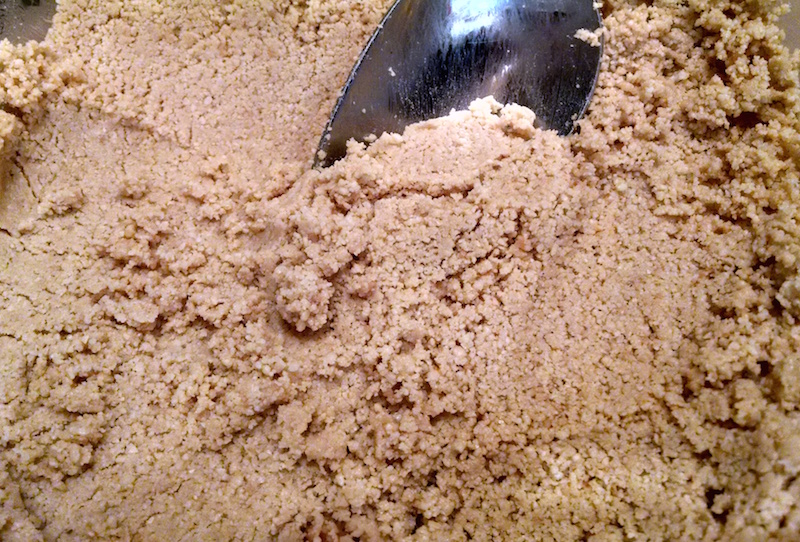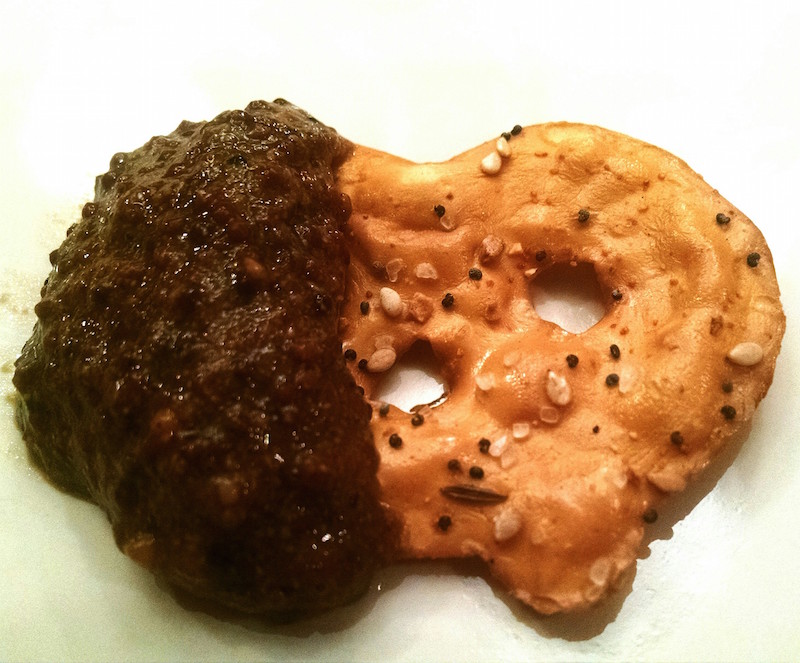Little Italian Man's Guide to the
Tomato Life
How to make good old-fashioned peanut paste with the consistency of ointment, just like great-great-great-great-great-great-grandma used to.
According to Wikipedia, Marcellus Gilmore Edson was the first to patent peanut butter, in 1884. His cooled product had “a consistency like that of butter, lard, or ointment" according to his patent application. He included the mixing of sugar into the paste so as to harden its consistency. He developed the idea of peanut paste as a nutritious staple for people who could hardly chew on solid food.
Are your mouths watering yet? Then let's begin.
Making homemade peanut-butter is extremely quick and simple. Below are the only four ingredients you'll need: a jar of dry roasted peanuts, peanut oil, salt and honey.
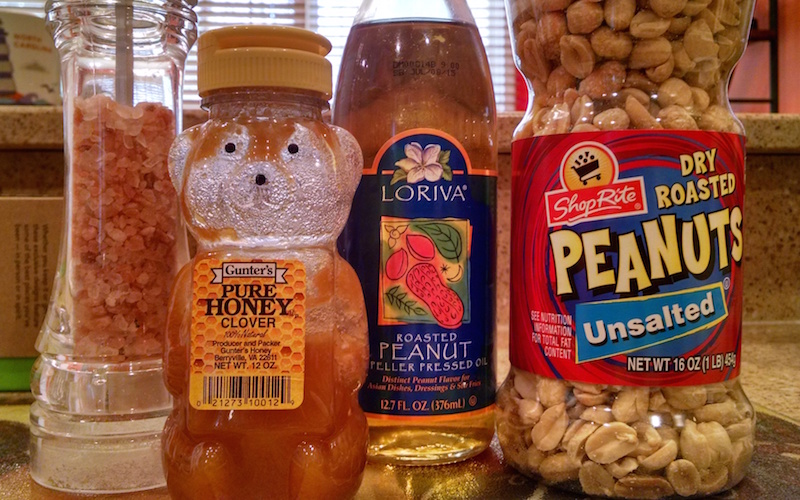
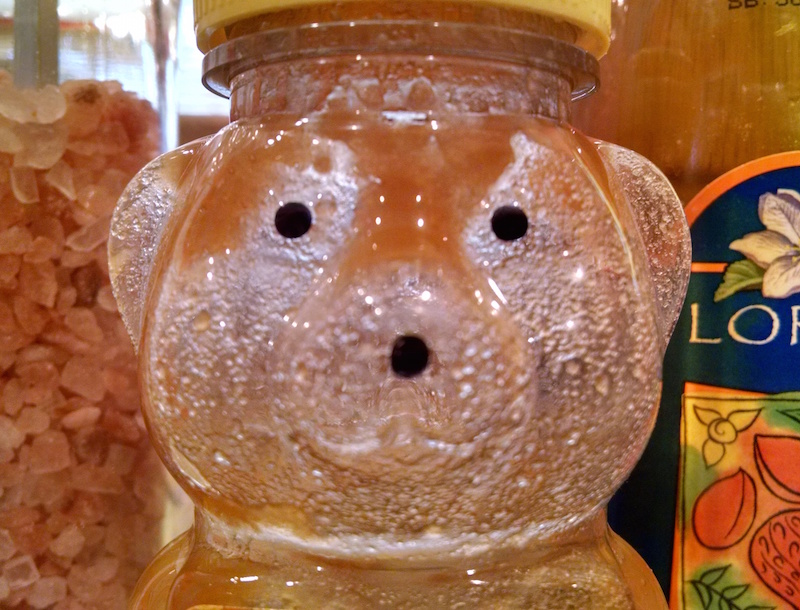

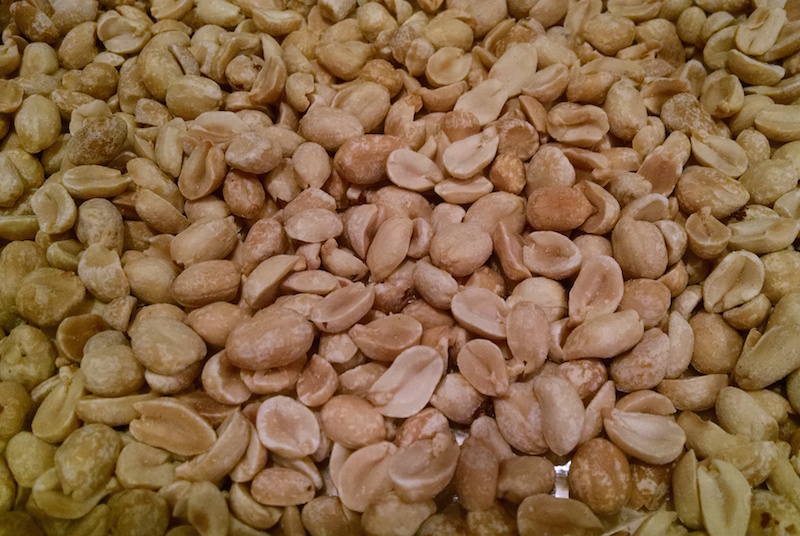
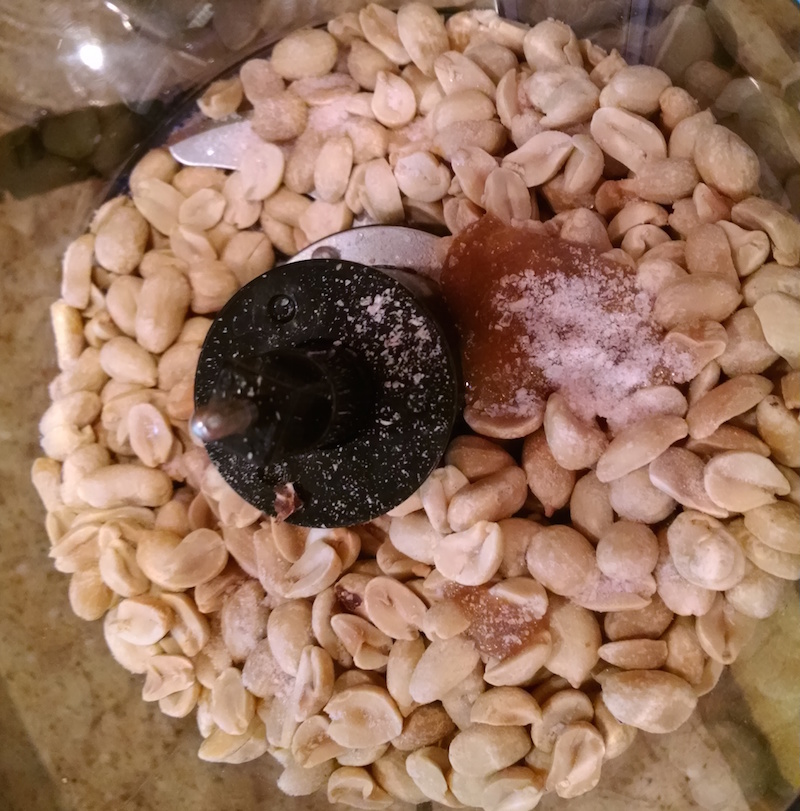
As in my previous entry, you’ll want to keep the number of a good cat psychologist handy after you start the food processor. Below, on the left, you can see the aftermath of one of my cats leaping off the chair at the start of the processing. This time around, though, not all my cats were affected equally. On the right is one of my less nervous cats, who was only mildly annoyed by the event.
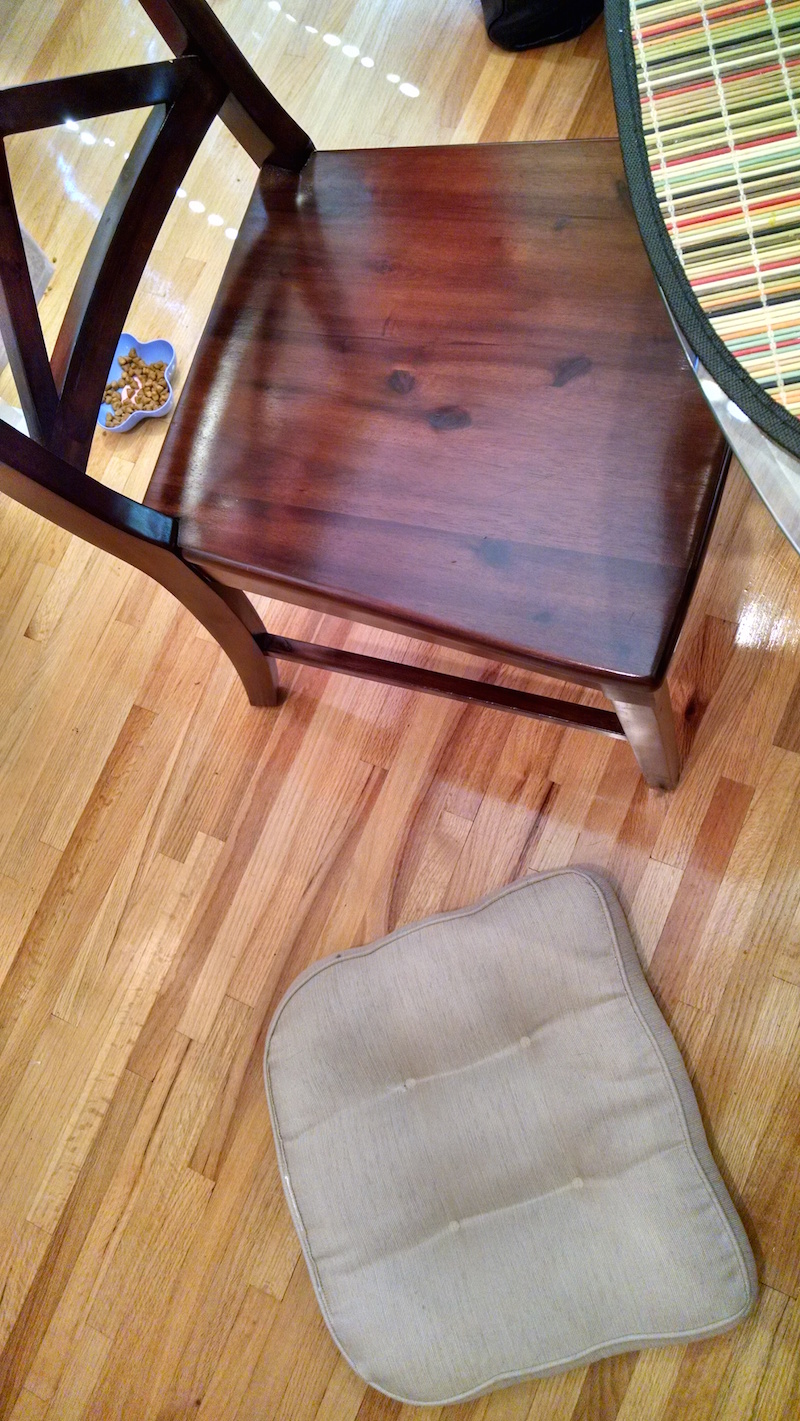

After it’s done processing, it’s ready to eat. And remember, the longer you process it, the more pasty and smooth it will be on your toothless gums.
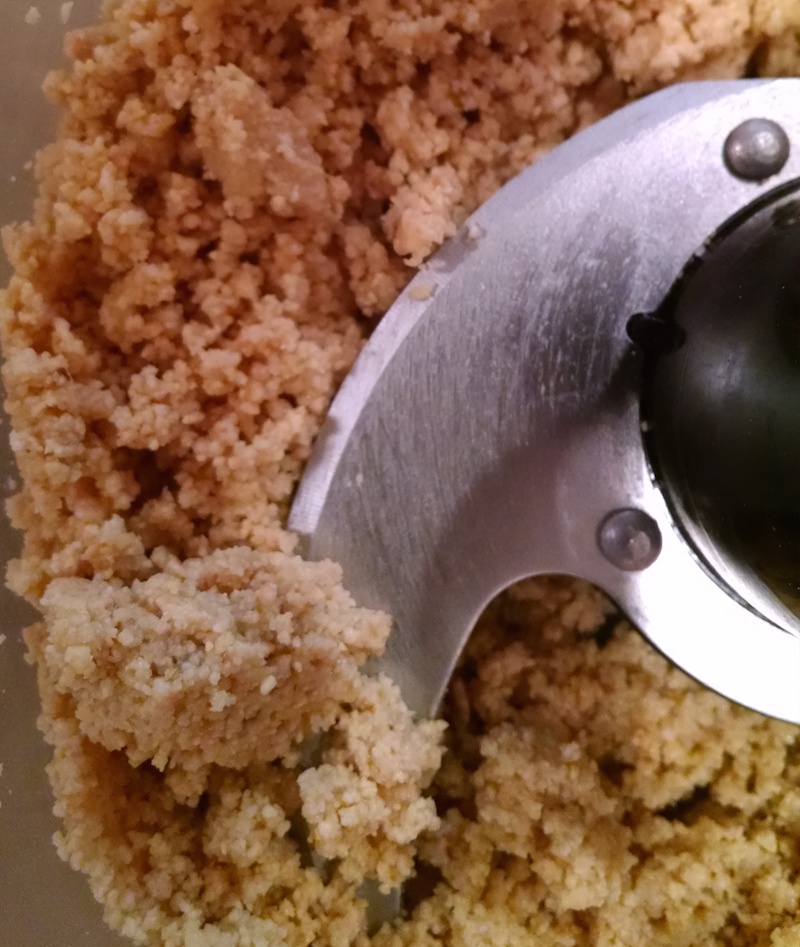
Now go and enjoy your delicious homemade peanut butter. I leave you with the inscription from the grave of the great George Washington Carver:
He could have added fortune to fame, but caring for neither, he found happiness and honor in being helpful to the world.
Inducing Post-Traumatic Stress Disorder in a Cat While Making Tasty Beer Mustard
Making beer mustard is an enjoyable treat for the whole family - except your cat, whose dreams will be haunted until his death. Let’s begin.
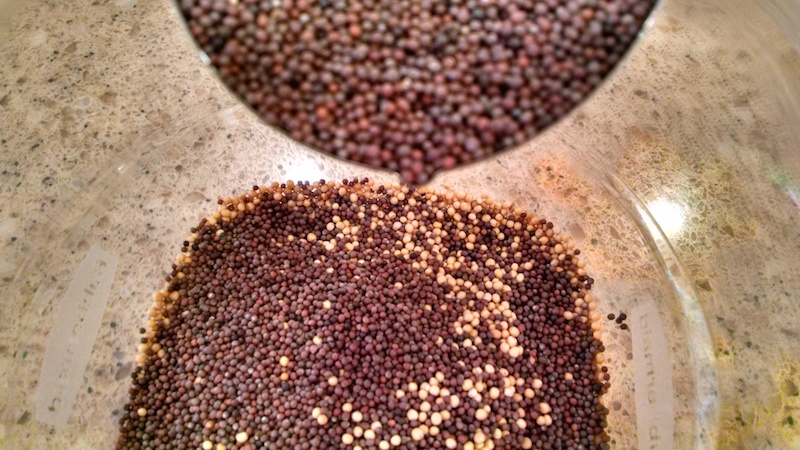
The inspiration behind making beer-based mustard came from the convergence of three sources: Weyerbacher’s imperial stout Heresy, Inglehoffer stone ground mustard and my two friends who have been tirelessly working toward the goal of making their own craft beer. The humans are on the right.
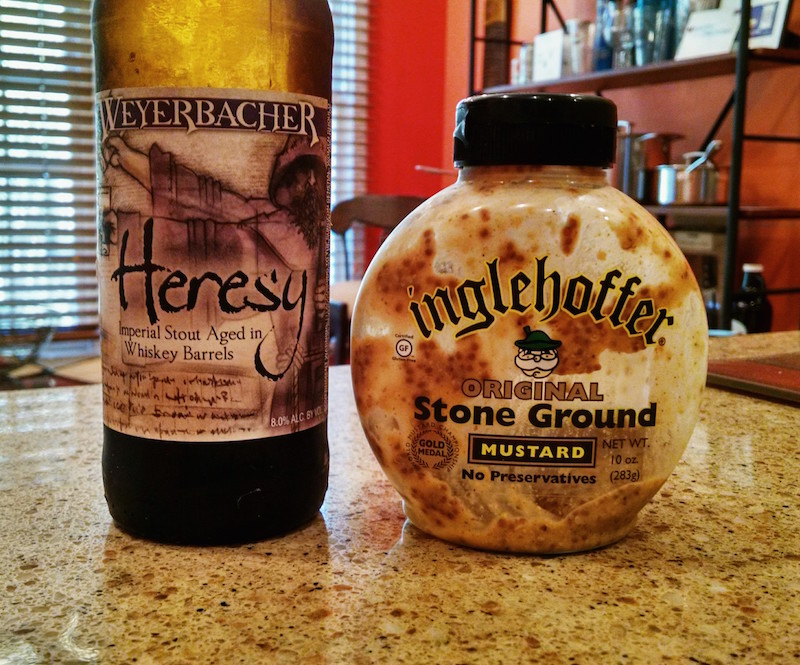
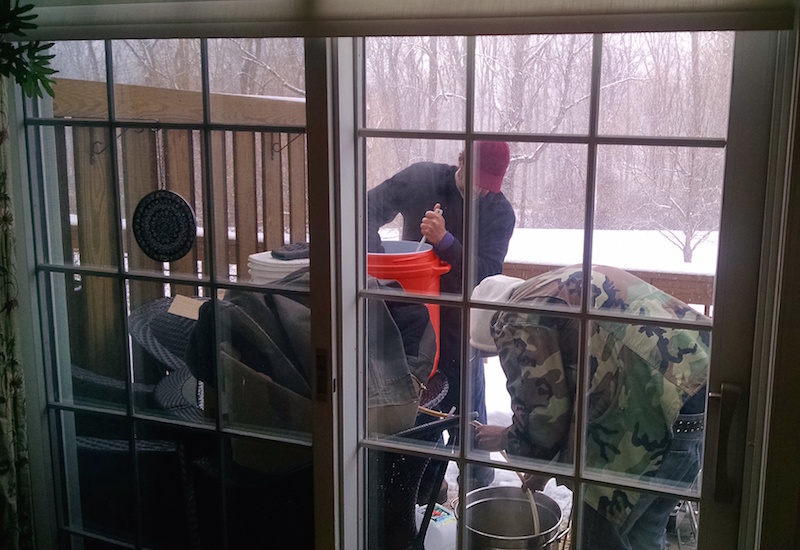
The first step is to buy packages of brown and yellow mustard seeds on Amazon.com in bulk. Then buy a four-pack of a dark beer of your choosing. One of the beers is for the recipe, the remaining beers are to help forget your pain. The ingredients I used are below, lined up as if they’re about to play the Family Feud. Note how there are two bottles of red wine vinegar, because Little Italian Man buys things multiple times when he forgets he already has them.
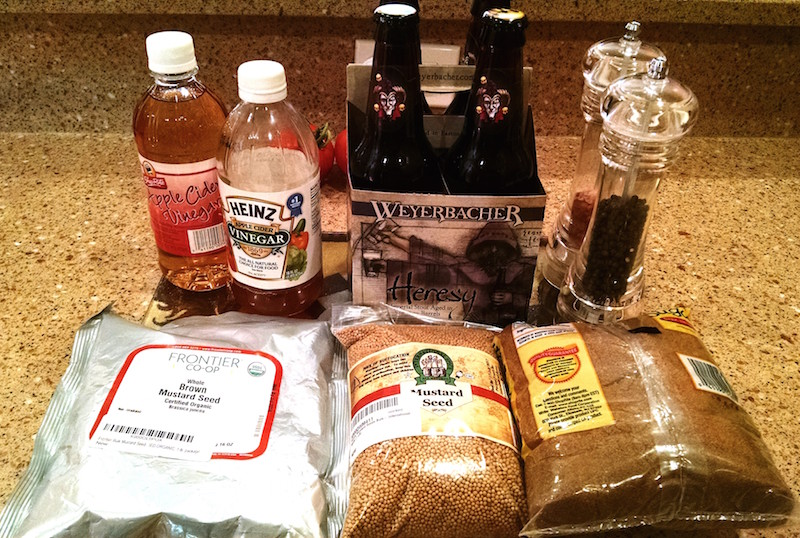
The beer-mustard recipe I based this on was derived from Allrecipes: http://allrecipes.com/recipe/beer-mustard/?mxt=t06dda. Start by integrating the brown and yellow seeds, then pour in your dark beer. Mix them well then wait 24 hours.
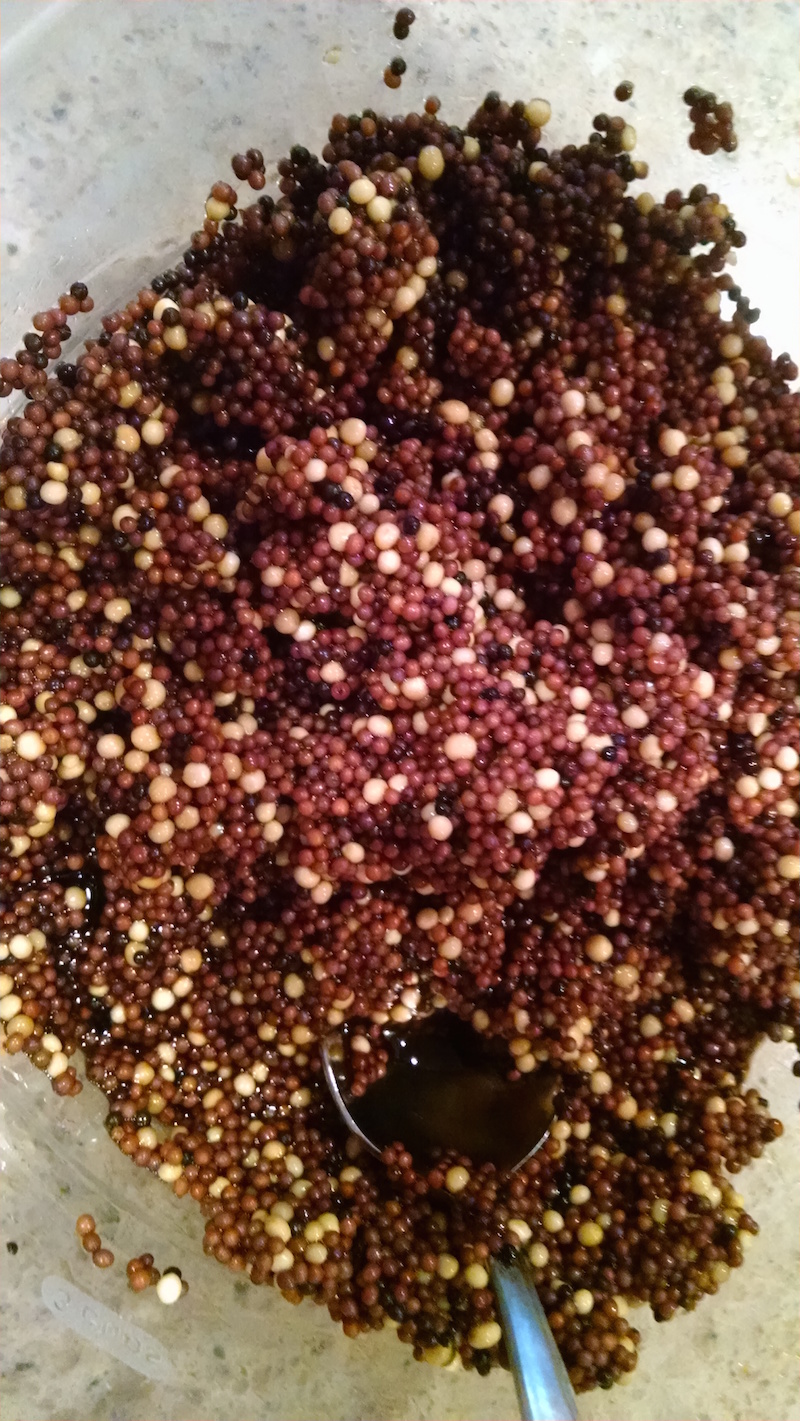
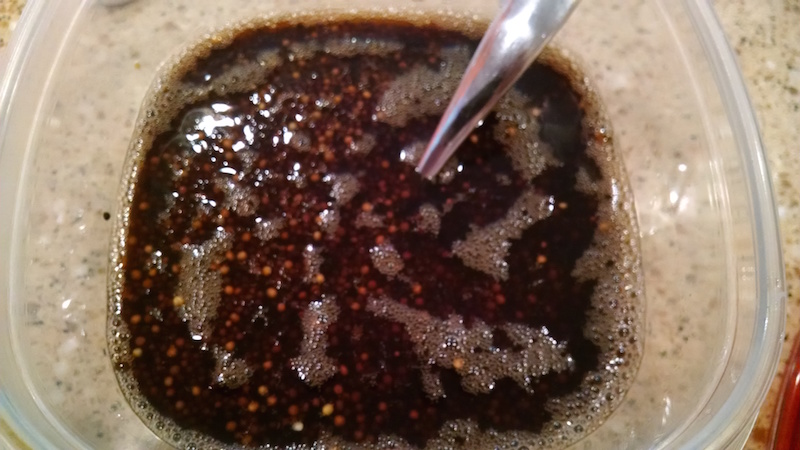
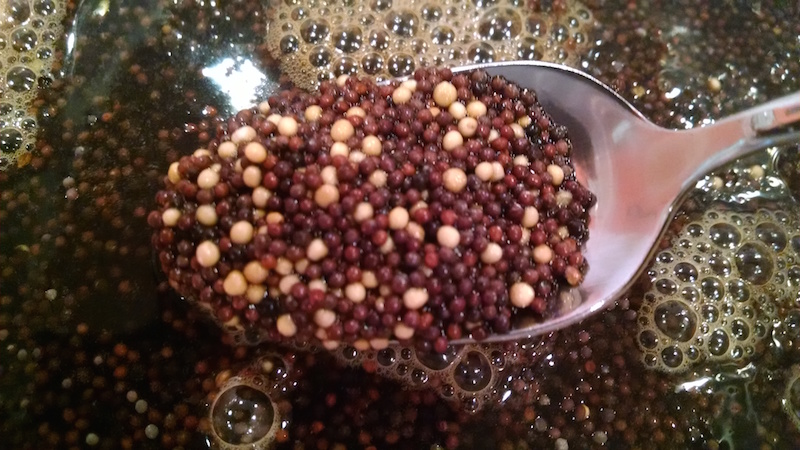
Did you wait 24 hours? Don’t lie to me. Go back and wait. Much better. Now, mix the remaining ingredients in a food processor and pulse for 5 minutes.
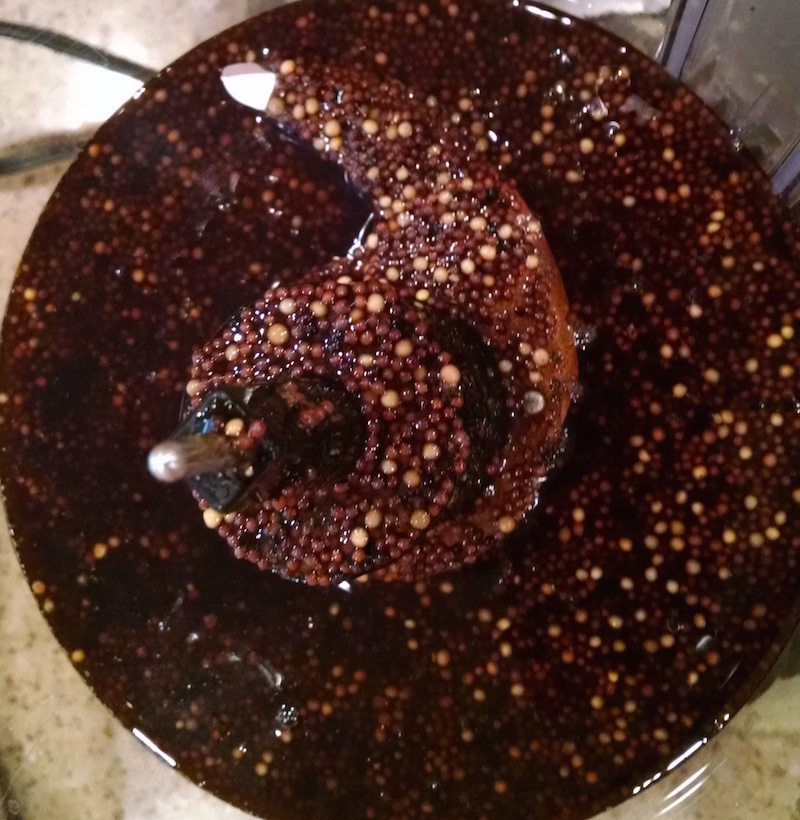
If you’ve ever used a food processor, you’ll know that it makes a noise reminiscent of the human-killing robots in the 1995 Peter Weller movie Screamers.
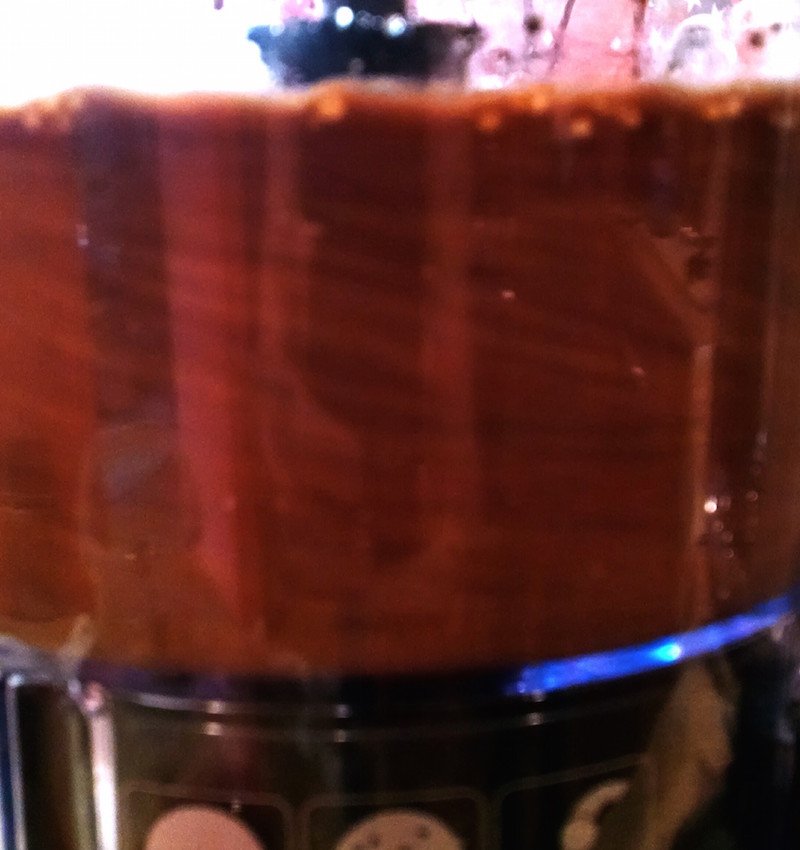
Now imagine that noise lasting for five straight minutes. It is this noise which pierced my cat’s ears and damaged his frontal lobe. Here he is at minute three of the food processing. These days he’s prone to jolting awake in the middle of the night and shivering in the corner of the room.



He starts therapy this week. After pulsing, place the mustard in the fridge and leave it there for two weeks…I’m sorry, what? How long? Two weeks? Two deal-killing weeks? Is this a joke? I have to wait two weeks to eat this stuff? I’m making mustard, not buying a damned gun. Two weeks.

So two weeks have gone by. My guests departed 1 week, six days and 8 hours ago, after angrily consuming mustard-less hot dogs. But as you can see, the wait was well worth it, judging by the huge difference between the before (left) and after (right) pictures.
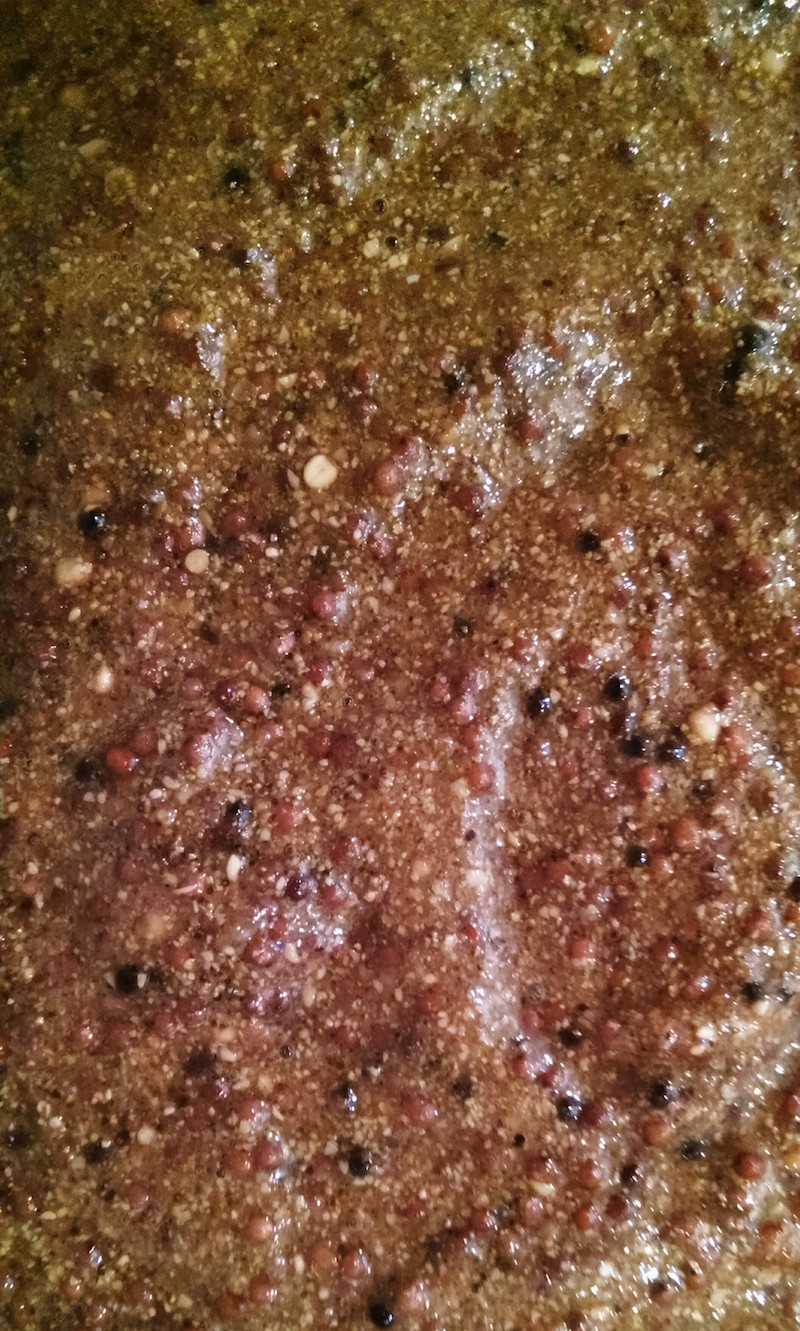

Apparently, waiting two weeks ages the mustard like a fine wine, which is a good thing. When ready, the mustard will be grainy, rich and delicious. Congratulations on making your own beer battered mustard. Add it to your favorite pretzels, hot dogs and brats, and enjoy.
When Life Gives You Tomatoes …
When I was thirteen years old my grandfather showed me how to grow tomatoes in a little patch of soil on the side of my house. Some years later, and with the advice of my grandmother, I learned how to make old-fashioned tomato sauce from scratch. It was such a simple and grounding experience. one which I’ve had the honor to repeat many times since, and one I’d like to share with you. To be sure, this is not a recipe blog, it’s a story of experiences. So sit back, relax and take a gentle scroll through one of the simplest and sublime experiences life has to offer - the making of tomato sauce from scratch.
Welcome to the Tomato Life.
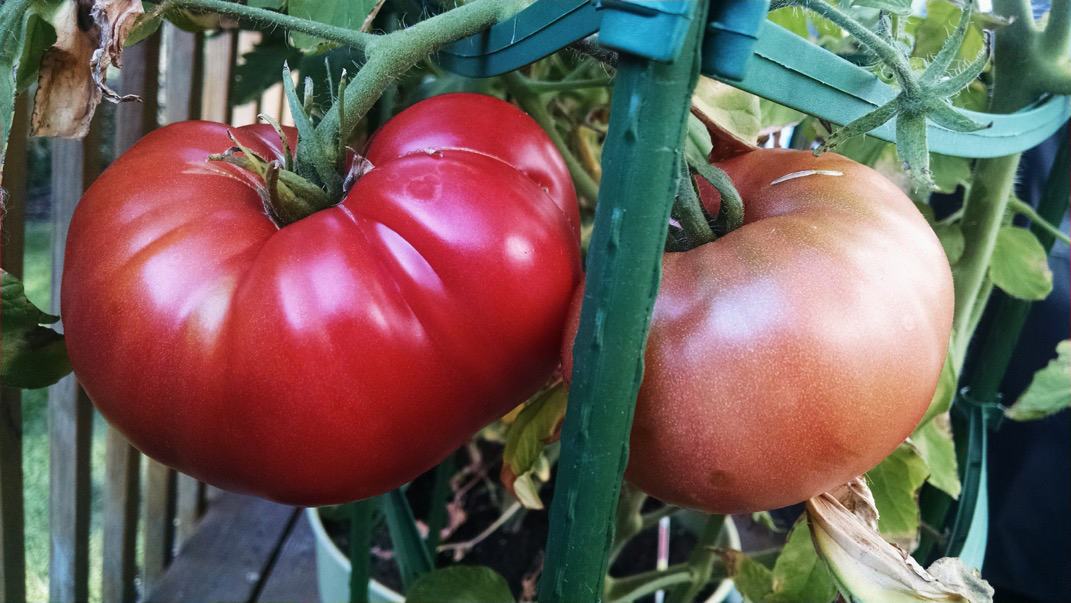
If one wants to make good sauce, one must use start with good tomatoes. Tomatoes are very easy to grow. The basic ingredients include good soil, lots of sunlight and warmth. Some say the most important ingredient is love. But I disagree. For me, the most important ingredient is a dump-truck sized shovel of Miracle Grow.
I grow my plants in pots on my small back porch. This year my ‘crop’ included Better Boy, Beafsteak, Brandywine, San Marzano, and Large Cherry tomato plants. I included the latter two so as not to seem biased toward tomatoes that started with the letter ‘B’. The tomato plant to the right is a Brandywine, and the beautiful tomatoes on the previous page are Better Boys.
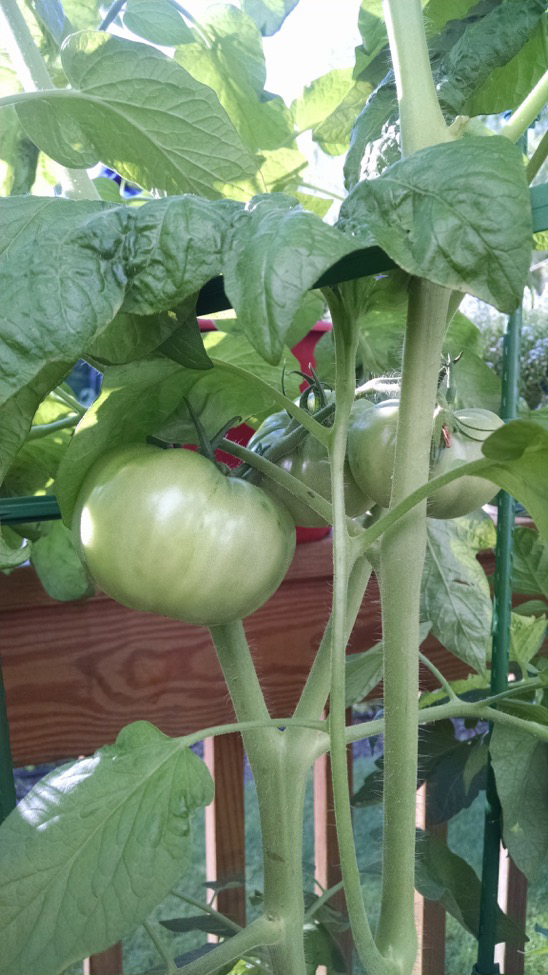

That’s me on the left, talking to my plants. I find that gentle verbal encouragement helps them take root. And if that doesn’t work, I add another mountain-sized heap of Miracle Grow.
After you’ve spent weeks and months diligently growing, tending to, and harvesting your tomatoes, then you’re ready for the next step….
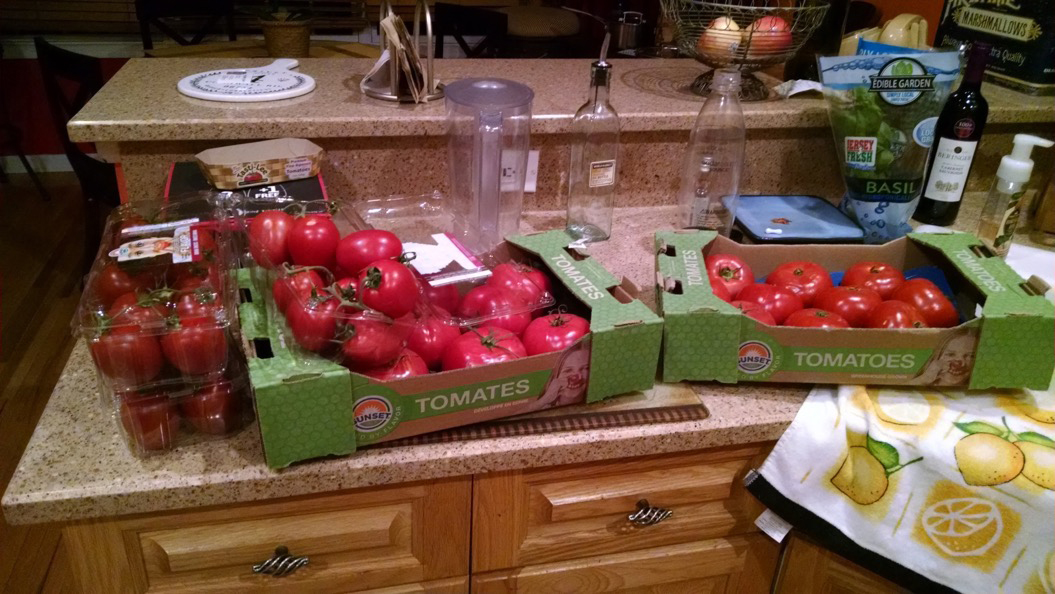
…of cutting them up and throwing them in a salad, because, unless you’re Old Macdonald you’re never going to grow enough tomatoes to make a whole jar of actual sauce. So head to a local farmer’s market (or Costco in the winter) and buy an unholy amount of ripe tomatoes. Note how I chose bilingual tomatoes because I’m culturally sensitive. This step is the only shortcut you’re allowed. For instance, using canned tomatoes is forbidden on this web site.
It is said that the ideal sauce tomatoes are medium size ones like San Marzano, Plum or Roma. That’s because they have less water and more pulp. But I say, use whatever you want, as long as it’s fresh and ripe. For reference, the photo on the bottom right is what the inside of a tomato should look like. I suggest bringing this photo and a small blade to the vegetable stand, cutting each tomato in half to confirm, then discarding those that aren’t to your liking. The produce stand man will appreciate your help in culling the weak from his herd.
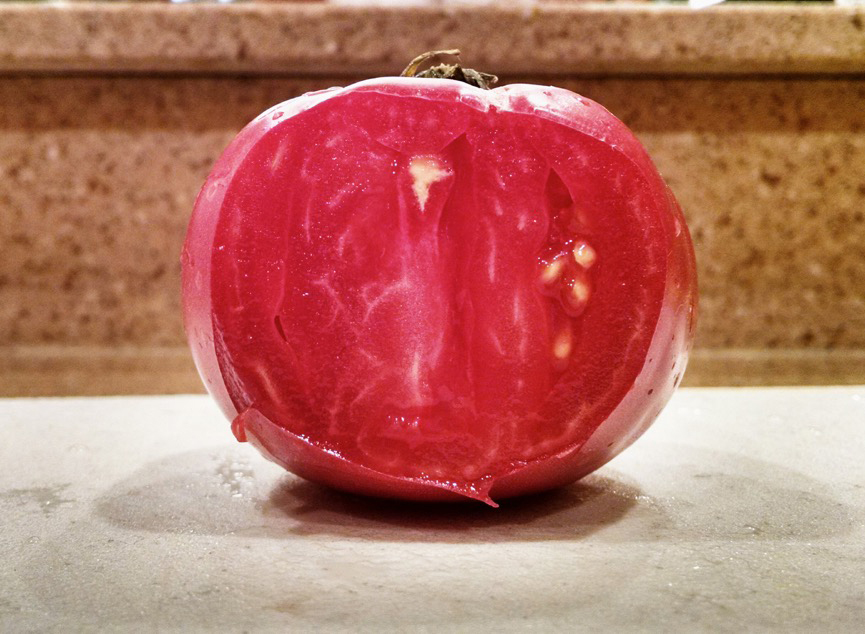
Next, drop the tomatoes into boiling water for moment, then move the them to a bowl of cold water and peel off the skin. Place the naked red orbs in a silver bowl and worship them for ten minutes. Next, you must remove the seeds and any little fibrous bits from the tomato. I usually do this by quartering them and then scooping the seeds out with a grapefruit spoon. Strain the juice out from the seeds and save it. Then take out your food mill and set it on another bowl. If you don’t have a food mill, purchase a food mill. Here’s your chance to release pent-up hostility in a healthy manner: Dump the seedless tomato quarters into the food mill and turn, turn, turn with all your might. Turn as violently as you wish, but be aware that knocking the bowl over cancels out an entire day’s worth of good feelings.
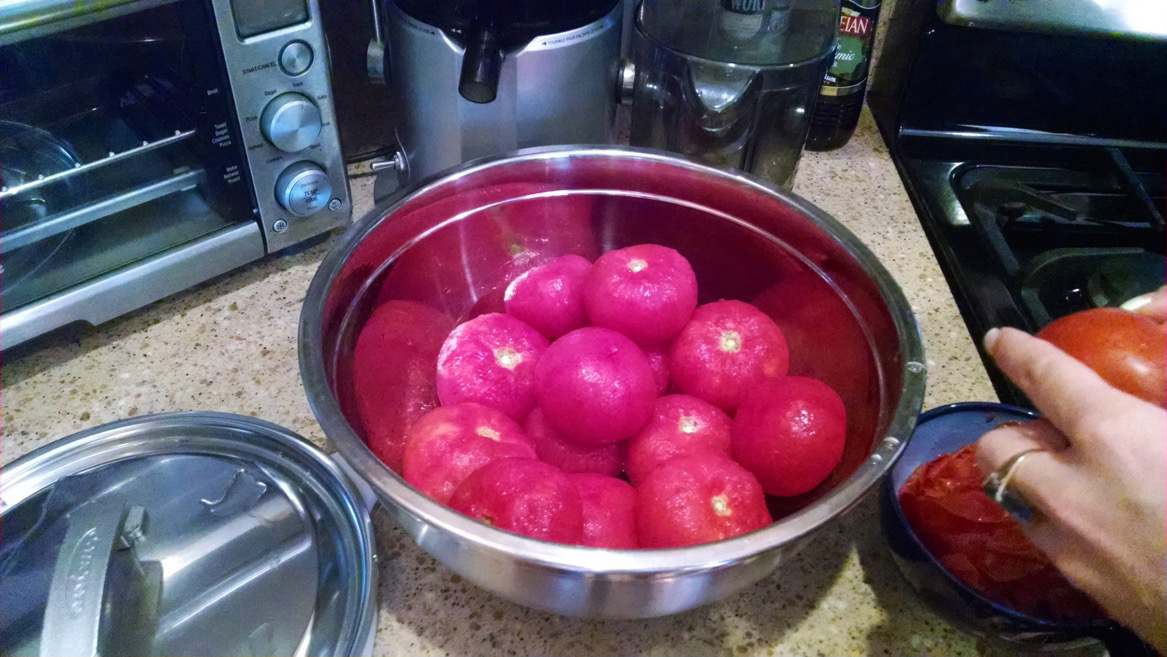
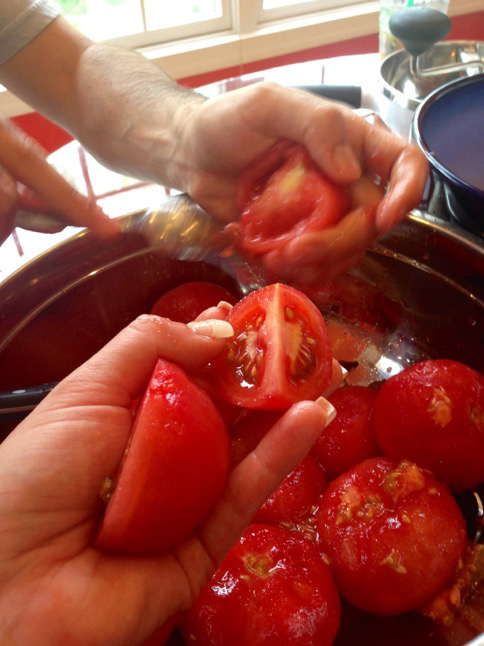
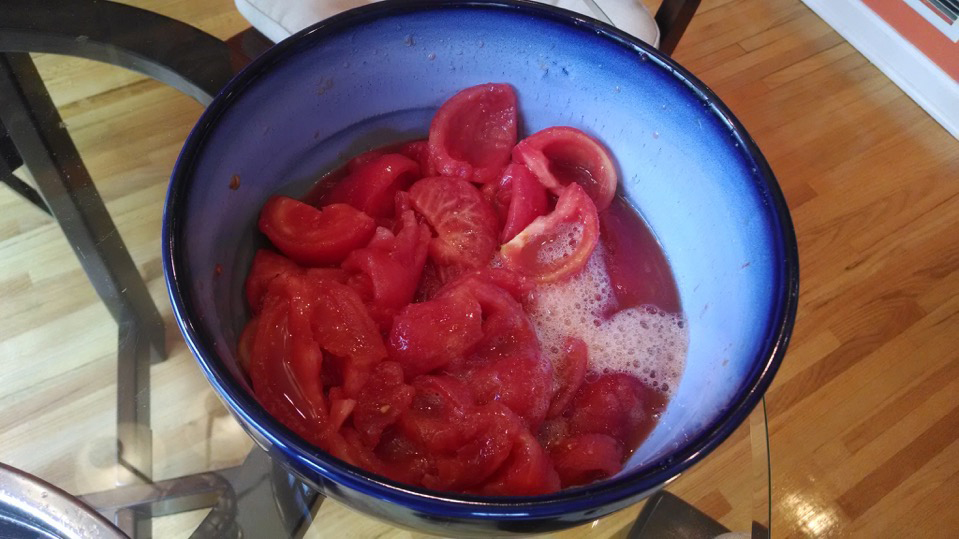
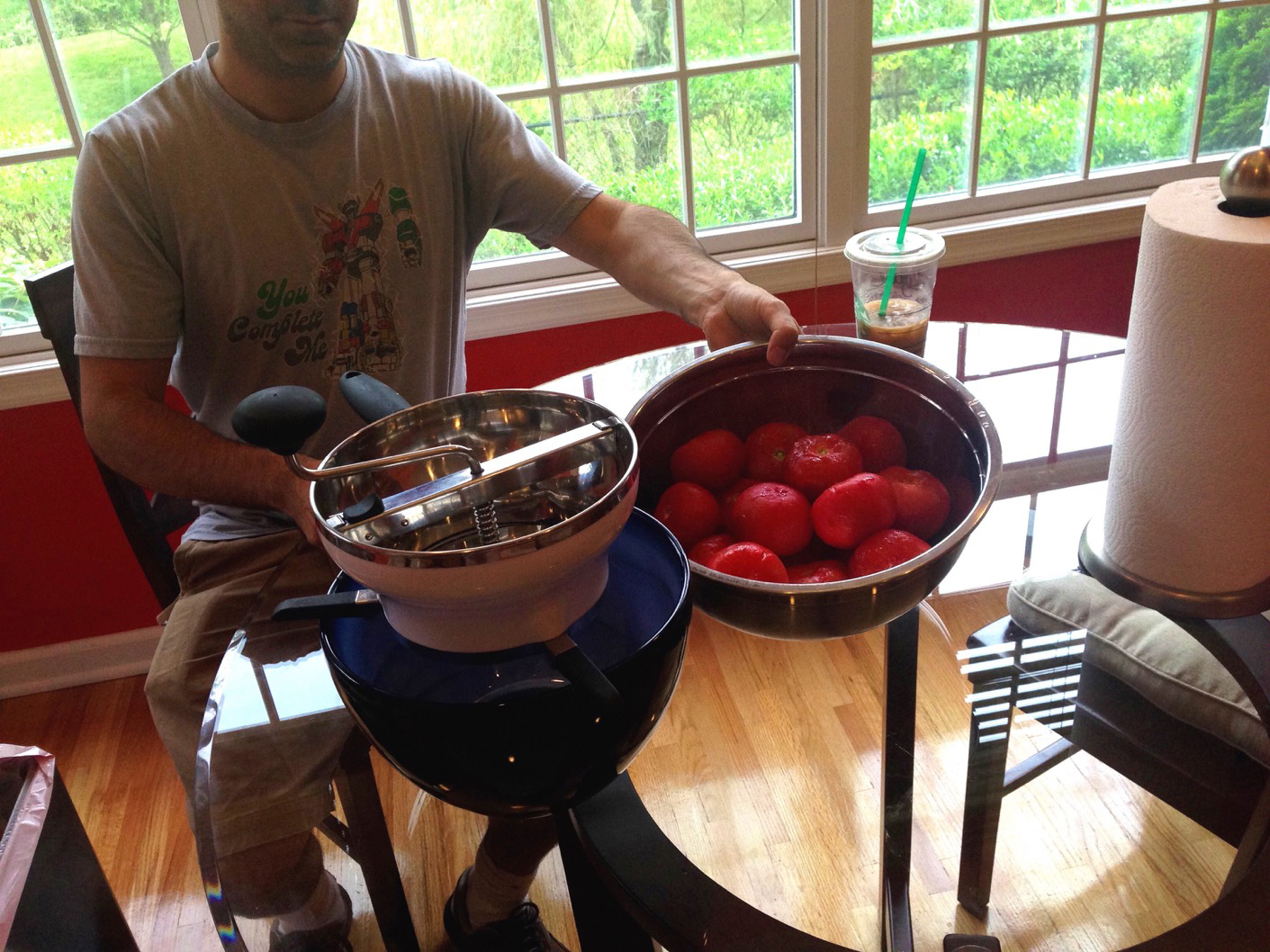
The food mill comes with different discs with varying grate holes. For a chunky sauce, use the coarse grate. For a thin sauce, use the the coarse grate and accept the fact that all sauce should be chunky. After the milling is complete, combine any strained juice with the milled tomato pulp. Then set this aside for a moment and gather the other ingredients you’d like to add. Keep it simple with the additional flavors. The flavor of the tomatoes should stand on its own merit.
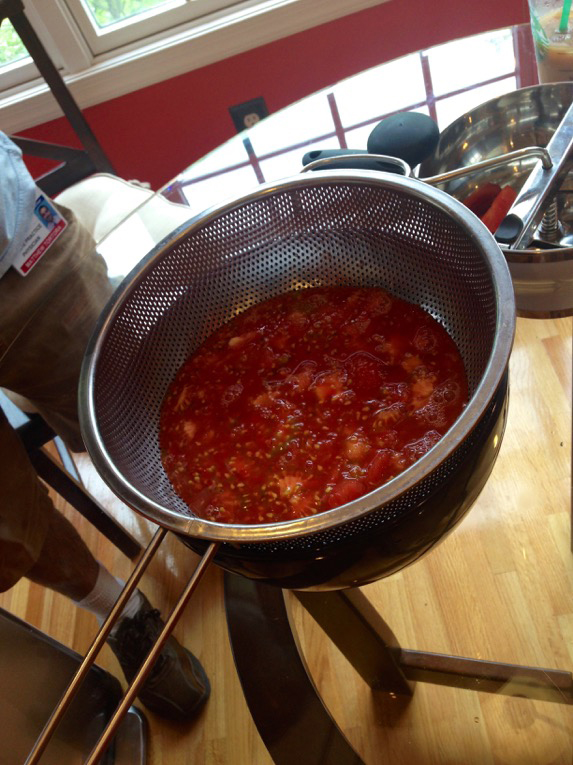
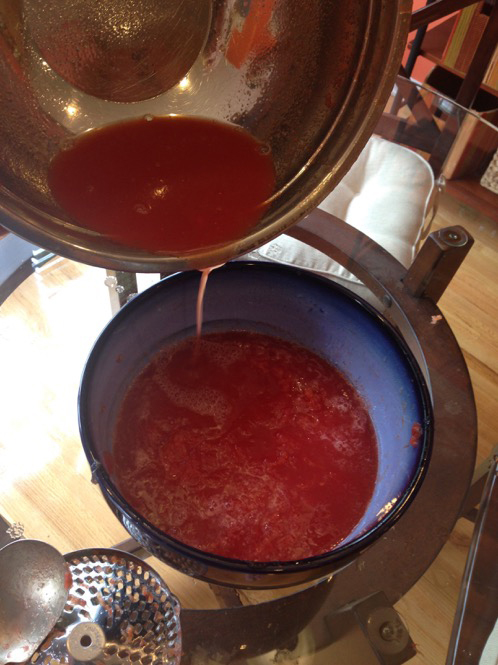
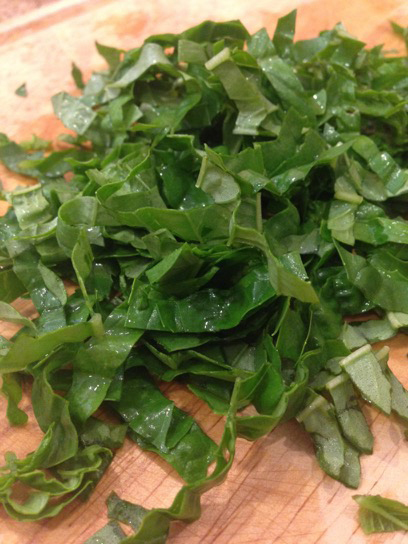
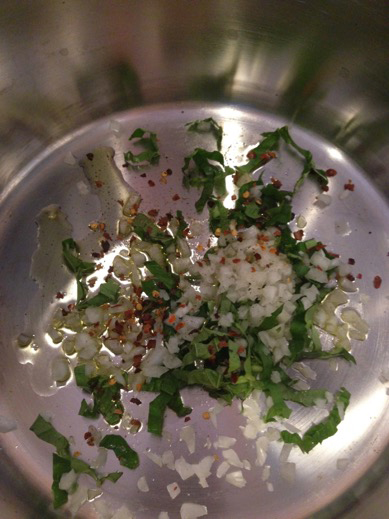
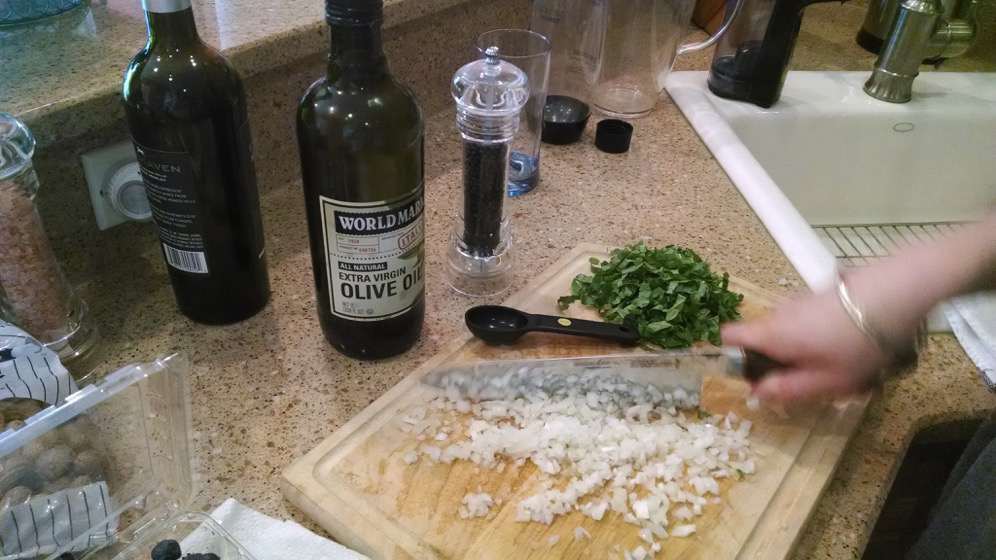
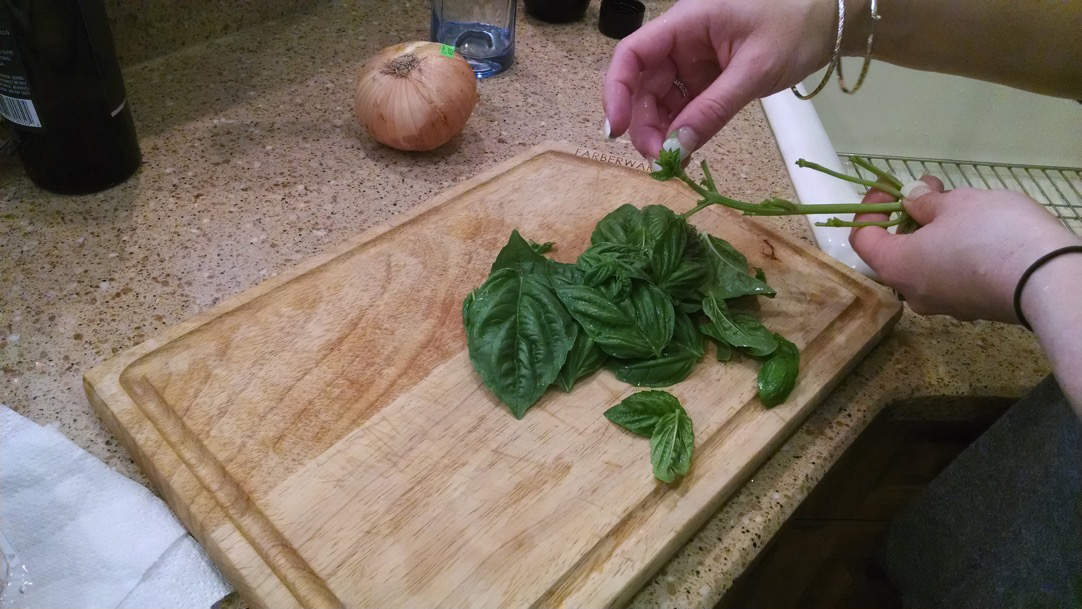
Start with freshly chopped basil (You are forbidden from using dried basil), olive oil, ground pepper, fresh garlic, onions and hot pepper flakes. Other popular add-ins include red wine and a pinch or two of salt. I have used both with great success, although if your tomatoes are good enough salt shouldn’t be needed. Remember, keep it simple. Sauté the onions. then add everything to a sauce pot and heat them up. Stop before anything burns. Then dump your tomato contents into the pot. Then spend ten minutes cleaning the tomato spatter off of everything within ten feet of the pot. Then bring the pot to a quick boil. Finally, take it down to a simmer and then stir occasionally. The sauce will slowly reduce to a suitable thickness over a certain number of hours. One other thing - don’t put sugar in your sauce. If you do, I will come to your house and punch you in the gut. There are plenty of other ways to sweeten sauce without using sugar. Don’t make me come to your house.
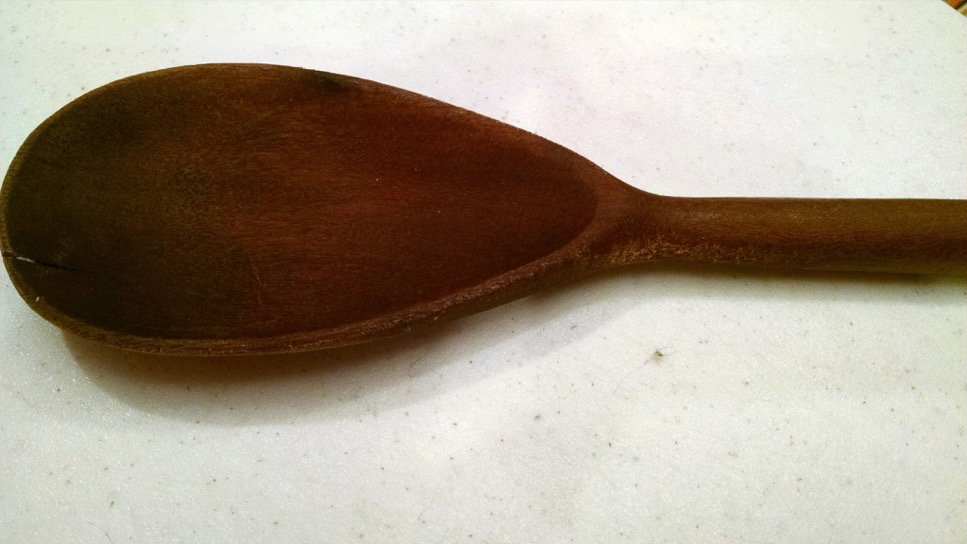
For maximal stirring results, it is important to your grandmother’s old wooden spoon, just like the one I have above. I recommend playing Italian opera music on a record-player in the background while letting the smell of sauce fill the air. If you really want the complete experience, you can make your own pasta from scratch. It take a bit of elbow grease, but it’s worth the challenge. This rolled up fresh pasta noodle below resembled a snail.
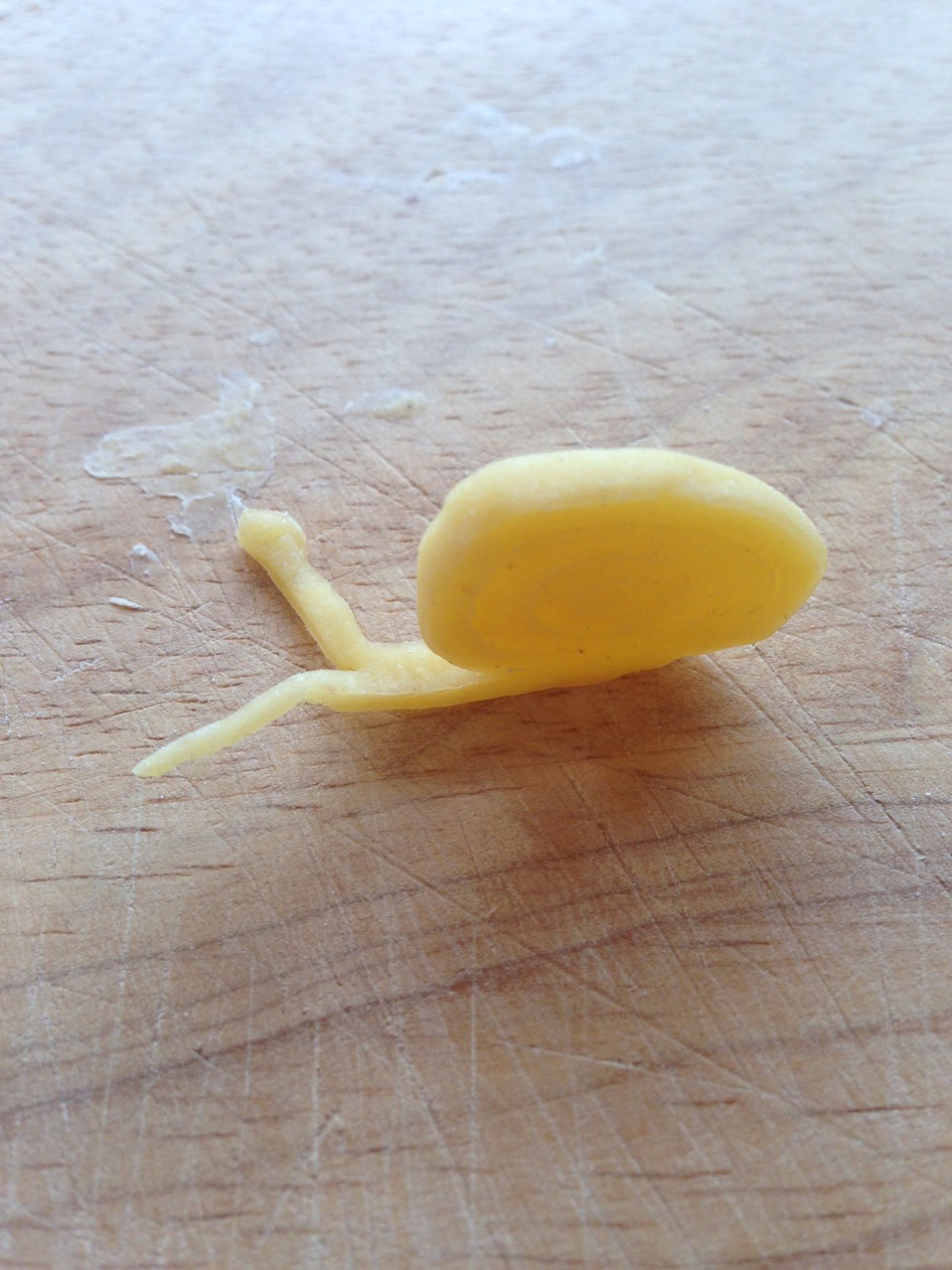
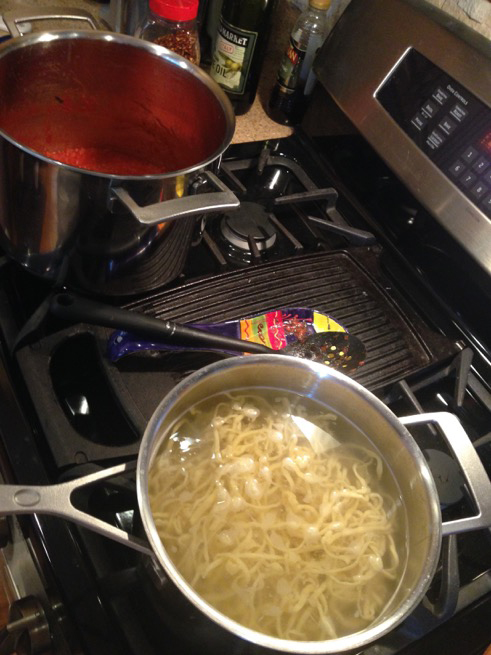
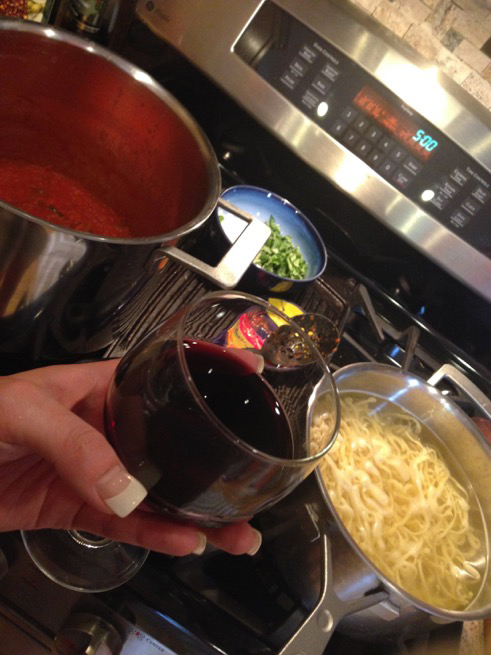
As the sauce simmers down to its perfect consistency, and the brindizi from Verdi’s La Traviata wells up in the background, don’t forget the most important step - excessive drinking. Technically you should’ve already started, but if you haven’t, it’s ok. Open up the bottle of wine and begin. I use a wine glass, but to help quicken the inebriation, you should consider pouring the wine directly into your mouth from the bottle, all the while stirring. Lastly, boil up your fresh pasta.
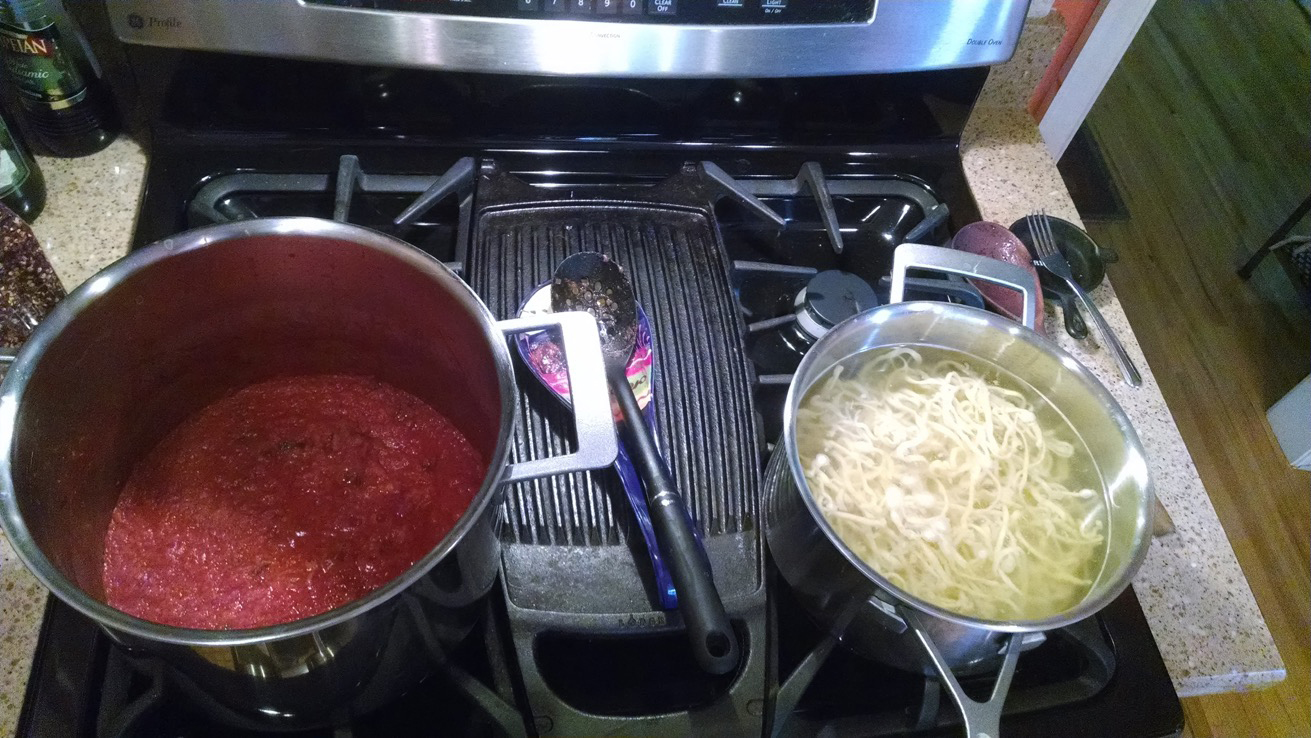

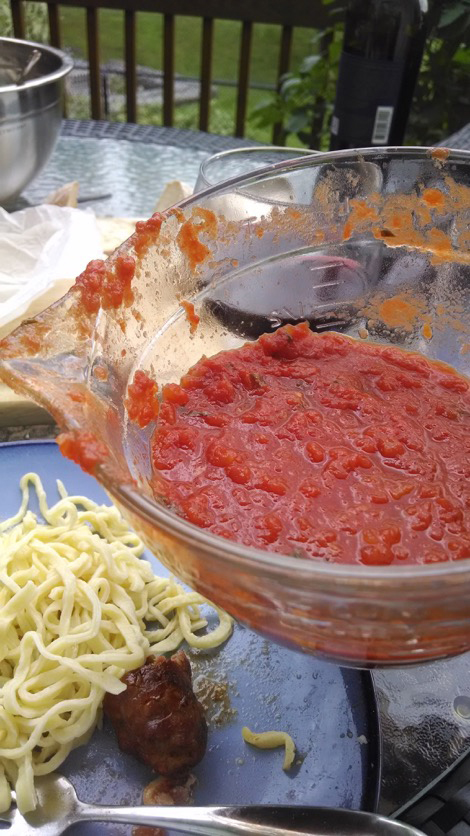
Congratulations, you’ve made a classic and timeless food from scratch. Top your dish with some freshly grated parmesan or similar cheese. Grill up your favorite meat, and eat with pride. Be forewarned, you will never want to return to jarred sauce again, and that’s not a bad thing.
Until the next experience,

